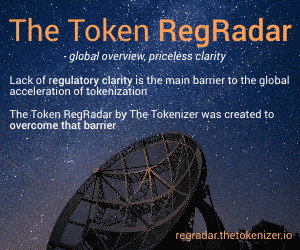Unlocking the Art World with Tokenization
By Michal Bacia

Imagine owning a unique piece of art, not just physically but digitally as well. This is now possible thanks to tokenizing art.
In this article, we delve into how artists are using non-fungible tokens (NFTs) to protect their creations and provide collectors with exclusivity. We explore the benefits of tokenizing art such as provable scarcity and a clear chain of ownership. Additionally, we discuss new possibilities for artists to sell their work beyond traditional galleries and dealers by offering it to NFT collectors or selling fractional ownership of their paintings.
The impact of this technology on the art world is significant; it offers protection against forgery, opens up new avenues for sales, and allows artists to reach a wider audience. It also presents exciting future possibilities such as legally binding contracts embedded within NFTs allowing more complex transactions related to artwork.
The Current State of the Art Market and the Potential of NFTs
Traditional artists often have reservations about embracing new technologies like NFTs and blockchain due to their unfamiliarity with these concepts. Many artists view them as “woo woo” or scams because they are digital in nature. However, it is important to note that the traditional art market also faces its fair share of challenges, including fraud and market manipulation. Museums have been found to house counterfeit or illegitimate pieces, highlighting the need for improved provenance in the art world.
Tokenization through blockchain technology can provide a solution to these issues by ensuring that each artwork’s origin is verifiable and traceable. This added layer of security can bring peace of mind to collectors and help combat fraud in the art market.
By creating an NFT for each artwork, artists can establish a clear chain of ownership and ensure that their creations are authentic. The blockchain provides a transparent and immutable record of an artwork’s origin, making it difficult for fraudsters to pass off counterfeit pieces as genuine if the physical pieces are not accompanied by an NFT. This increased level of security can give collectors peace of mind and help maintain the integrity of the art market.
The Artists’ Interest in Tokenizing Art
Despite the skepticism surrounding NFTs and blockchain technology, some artists are intrigued by the potential benefits of tokenizing their art. Tokenization offers a way to protect their unique creations and provide collectors with a sense of exclusivity. Artists understand the importance of owning an original piece of art and want their collectors to know that they are the sole owners of the paintings.
By tokenizing art, artists can ensure that each painting has a unique digital twin on the blockchain. This digital twin serves as a comprehensive package that includes additional data about the painting, such as its creation process or any relevant videos or photos. It acts as a guarantee of authenticity and provenance, making it difficult for counterfeiters to replicate the original work without the associated NFT.
The Process and Benefits of Tokenizing Art
Tokenizing art involves creating non-fungible tokens (NFTs) for each artwork. NFTs are unique digital assets that cannot be replicated or manipulated. They are created on a blockchain, which provides a transparent and immutable record of an artwork’s origin and history. By tokenizing their art, artists can protect their creations and establish a clear chain of ownership.
Tokenizing art means essentially creating a digital twin of the physical painting. The NFT serves as a comprehensive package that includes additional data about the painting, such as its creation process, videos, or photos. It acts as a guarantee of authenticity and provenance because it’s impossible to copy the NFT. The physical painting can be forged, but if collectors know that there’s also the digital twin, they will demand the transfer of the NFT together with the transfer of the physical artwork, to make sure it’s authentic. This way forged paintings without the digital twins become worthless.
By the same logic, the NFT and the physical painting become a set, or “an art installation” and should not be separated. Each piece contributes different aspects of the “installation” and contributes different value to the collectors. The physical painting offers emotional, esthetical, and tangible benefits. The digital twin provides rational and transactional benefits, including containing the economic value of the artwork. Together, the digital and the physical twin are more valuable than separate.
Tokenization also opens up new possibilities for artists to sell their work. Instead of relying solely on galleries and art dealers, artists can explore alternative avenues like NFT marketplaces or selling fractional ownership of their physical paintings. By embracing tokenization, artists can break free from the limitations of traditional art channels and connect with a broader audience who appreciates their unique creations.
The Future Possibilities of Tokenized Art
While tokenizing art offers numerous benefits, it is important to acknowledge that it is not a one-size-fits-all solution for the art market’s challenges. However, it does present an exciting opportunity for artists to explore new avenues and expand their reach.
As technology advances, we may see the emergence of legally binding contracts embedded within NFTs. This would enable artists and collectors to engage in more sophisticated transactions directly through the blockchain.
While the feasibility and enforceability of such contracts are still open questions, they present an intriguing possibility for the art market. Artists and collectors could potentially enter into agreements related to the artwork, such as royalties or resale rights, that are automatically enforced through smart contracts.
For now, artists can focus on creating digital twins that enhance the collector’s experience and provide additional layers of information about the physical paintings.
The Concept of Custody, Claiming, and Control in Tokenizing Real-World Assets
When it comes to tokenizing real-world assets, including art, questions arise regarding custody, claiming, and control. In the case of physical art paired with digital twin NFTs, the collector who purchases the artwork becomes the custodian of both the physical object and the NFT. Therefore, they have full control over both the physical artwork and its associated NFT.
There is no extra claim or promise associated with the NFT itself. The ownership and control lie in the hands of the collector who possesses both the physical artwork and its digital representation. For these reasons, there are no risks for the collectors or artists associated with issuing or holding the digital twin NFTs.
Alternatively, other tokenization solutions involve locking the physical artwork in a secure vault and embedding a code within the NFT that grants access to the vault. This approach ensures that only those who possess the NFT can access the physical artwork. To access the code, the NFT has to be destroyed, or “burned”.
In this case, the custody of the physical art is with the custodian providing the vaults. The claim is the ability to open the vault and only the NFT holder has control over the access code. But, because the NFT is destroyed when the vault is opened, the NFT is not a digital twin that tracks the provenance and proves the authenticity of the physical piece.
Wrapping Up
As we conclude our exploration of the world of tokenizing art and NFTs, there are several key takeaways to remember:
- The process of tokenizing art involves creating unique digital assets known as non-fungible tokens (NFTs) that serve as a guarantee of authenticity and provenance for each artwork.
- NFTs open up new possibilities for artists to sell their work beyond traditional galleries and dealers, allowing them to reach a wider audience.
- The future holds immense potential for legally binding contracts embedded within NFTs, enabling more complex transactions related to artworks directly through blockchain technology.
View the original publication here.
About Michal Bacia
I started working on token economics in early 2017.
I’m a Fractional Chief Token Economist “as a Service” at Web3 Economics
- Master’s in managerial economics and prior career in project finance
- Co-founder and Chief Economist of 3aDAO
- Worked with 20+ web3 projects and enterprise
- Lufthansa Aviation Blockchain Challenge winner
- Token economics mentor for Hypernest web3 startups
- My article “Trust-less governance is the killer app of blockchain technology” is a part of the Blockchain curriculum at MIT Sloan
My goal is to demystify token economics, tokenization, decentralized finance, NFTs, etc., and make them accessible and useful for DAOs and their members and also for businesses and their customers.
Photo by Vincentas Liskauskas on Unsplash
Read other stories: Tokenization and The Future of Money: Improving the old, Enabling the new
Tokeny and Klaytn Foundation Unite for Massive RWA Tokenization Adoption in Asia
You Might also Like















